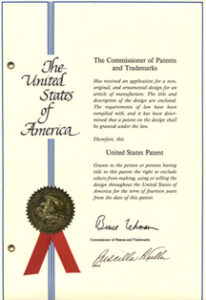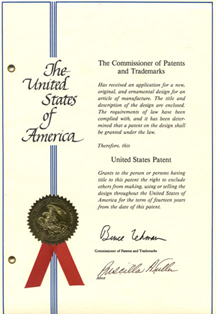
If you have a new invention idea and intellectual property and you have determined that it is time to patent, then be sure you are really ready. Get started! It is time to check with the patent office if the idea is really patentable. Do you need to file a one year provisional patent? The patentability of a new product invention is determined only by attorneys and patent examiners in Washington, D.C., U.S. Patent and Trademark Office and they are a tough bunch of folks. In addition, the patent office is in general becoming more stringent with the acceptance of new patents. Most important, it is important to understand the exact definitions and application requirements of the different types of intellectual property protection. The requirements and protection value of a provisional followed by a utility patent over a design patent over as trademark are very different, each with protection advantages and disadvantages. If you have any questions, consult with your patent attorney. The write-up of a provisional and utility patent application are very important as to the patentability and timeline of acceptance of the (www.USPTO.gov) Patent Office, of the submitted drawings and stated claims. The main point is to have your invention worked out or at least prototyped and well documented with as much engineering information as possible prior to patent application. You want to get a patent and protect what is really going to the market and not have to file for another patent application and associated costs.
To evaluate patentability, you must consider the fundamentals of the investment and reasons for requesting such intellectual property protection. The primary purpose for patent protection, beyond trade secret rights is to protect the commercial value of the product, invention or innovation from domestic and foreign competition. Additionally, once an idea or patentable invention has been offered for sale or sold to the public the clock has started ticking and the inventor has 12 months to proceed into patent process or he or she effectively gives up patent rights. The entire patent process form application submission to receiving declaration of receiving an official patent number may take more than 2-3 years. This time should be used to launch the product onto the market, to make as big a splash as possible, taking advantage of the still relative confidentiality of your invention over the oncoming competition. Once patented your exact patent claims and drawings are broadcast into the public forum via the internet to the globe and if you are hitting the competition in their wallets then you will be copied or stepped over within 6-12 months.
If the commercial value is worth protection, based on an objective market, design and manufacturing evaluation, then it is time to start the patent application process. Patent Evaluation is an extremely important part of the business plan in defining the business development challenges and the roles of Industrial Design and Engineering and proof of concept – prototyping requirements. A thorough patent search and patent evaluation and feasibility study can provide valuable data to assist in answering the primary questions of, if it has already been patented or is the invention covered in some manner by claims in an existing patent? The search process results also help in defining design protocol and focusing on what is really patentable, including generating the necessary 2D drawings and 3D proof of concept development prior to committing to the patent process and product development. This process will also reduce the risks of patent infringement and peering deep into the competition. A well managed and executed patent and the process which leads to a patent can support defining as broad as possible the scope of the patent and define the specific claims while promoting development of a comprehensive patent portfolio.
Once the patent evaluation process has defined the window of opportunity it is time to define the overall business/production feasibility of the proposed design solution and define and calculate the chances of success. This can be achieved and structured into a formal Feasibility Study or limited Feasibility Analysis. Although the formal feasibility analysis or study is not always necessary, when justified, it supports the decision makers in justifying the continued patent and business development costs. The investment into a feasibility study can assist corporate decision-makers and entrepreneurs in evaluating the real world patentability, and manufacturing and production and tooling ramifications and costs associated with an invention before it is pursued. Contact WhiteLight Design with questions
The empowerment slogan for the year: “The key is not to prioritize what’s on your schedule, but to schedule your priorities.” Stephen R. Covey

